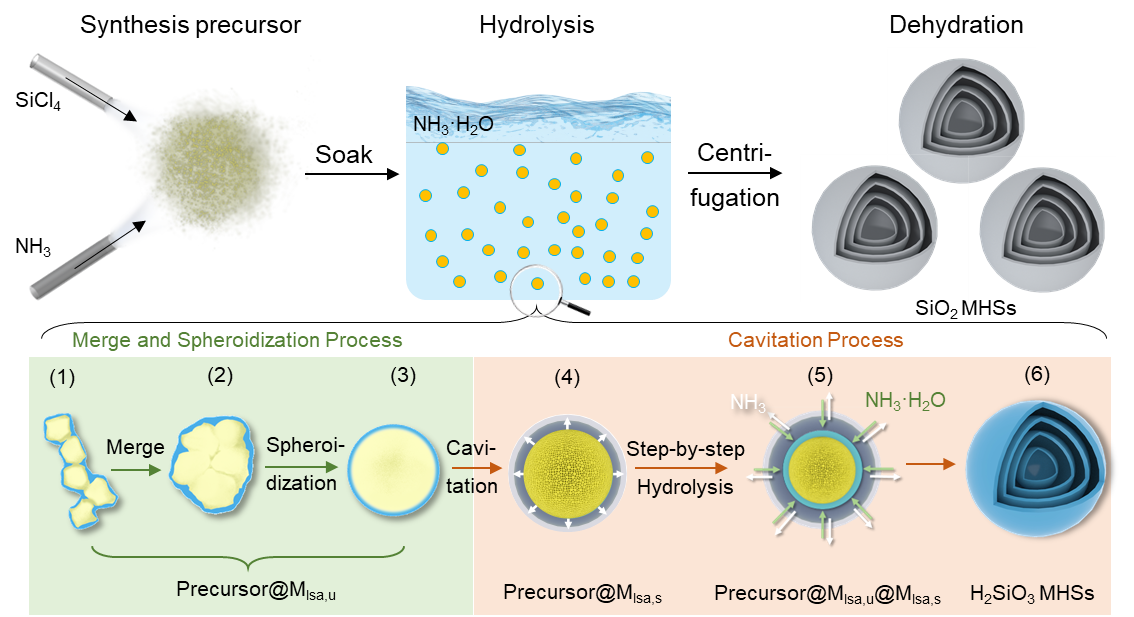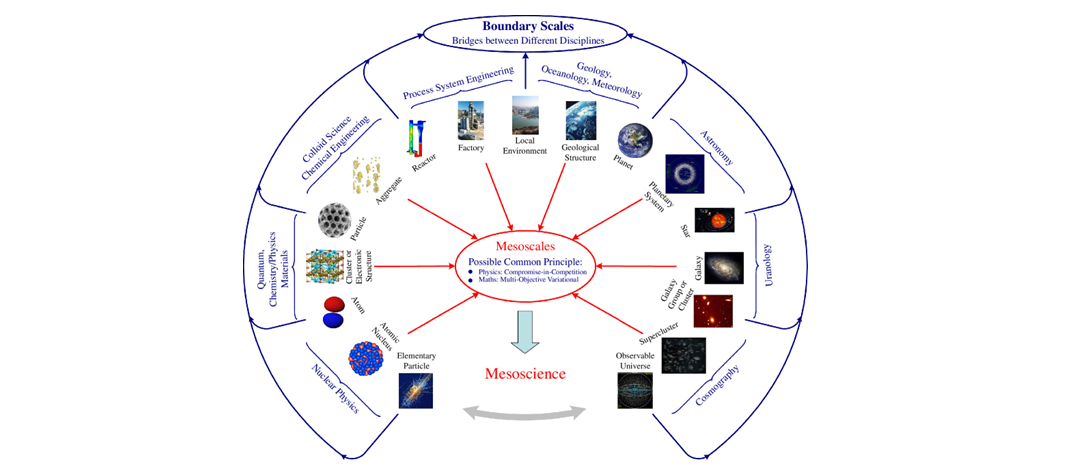Due to the characteristics of porous walls and empty spaces, SiO2 multi-shell hollow spheres (MHSs) can regulate mass, energy transfer, and chemical reactions, making them promising for applications in confinement catalysis, energy storage, chemical separation, and drug release. However, scaling up the production of SiO2 MHSs from laboratory synthesis to industrial production remains a significant challenge.
To address this issue, a research team led by Prof. ZHU Qingshan from the Institute of Process Engineering (IPE) of the Chinese Academy of Sciences, developed a precursor hydrolysis method (PHM) to achieve mass production of SiO2 MHSs. The study was published in Advanced Materials (DOI: 10.1002/adma.202409421).

Figure 1. Schematic diagram of preparation of SiO2 MHSs via precursor hydrolysis method (Image by ZHU Qingshan)

Figure 2 SEM images of the powder and cross-section of SiO2 MHSs and physical pictures (Image by ZHU Qingshan)
Firstly, precursors containing Si(NH)2 were synthesized from SiCl4 and NH3 using a fluidized bed reactor. The precursors were then hydrolyzed in ammonia water at 25°C for five hours and subsequently heated to 60°C to directly obtain SiO2 MHSs. Additionally, the researchers found that by adjusting the hydrolysis medium, they could effectively control the void ratios and diameters of SiO2 MHSs, with void ratios ranging from 0.05 to 0.85.
In contrast to conventional methods, the PHM eliminated the processes of template preparation and high-temperature treatments, allowing the synthesis of kilograms of SiO2 MHSs powder. This method improved synthesis efficiency and reduced costs, enabling the transition of SiO2 MHSs from laboratory research to industrial applications.
Media Contact:
LI Xiangyu
Public Information Officer
Institute of Process Engineering, Chinese Academy of Sciences, Beijing 100190, P. R. China.
E-mail: xiangyuli@ipe.ac.cn
Tel: 86-10-82544826
 Search
Search




 京公网安备110402500047号
京公网安备110402500047号